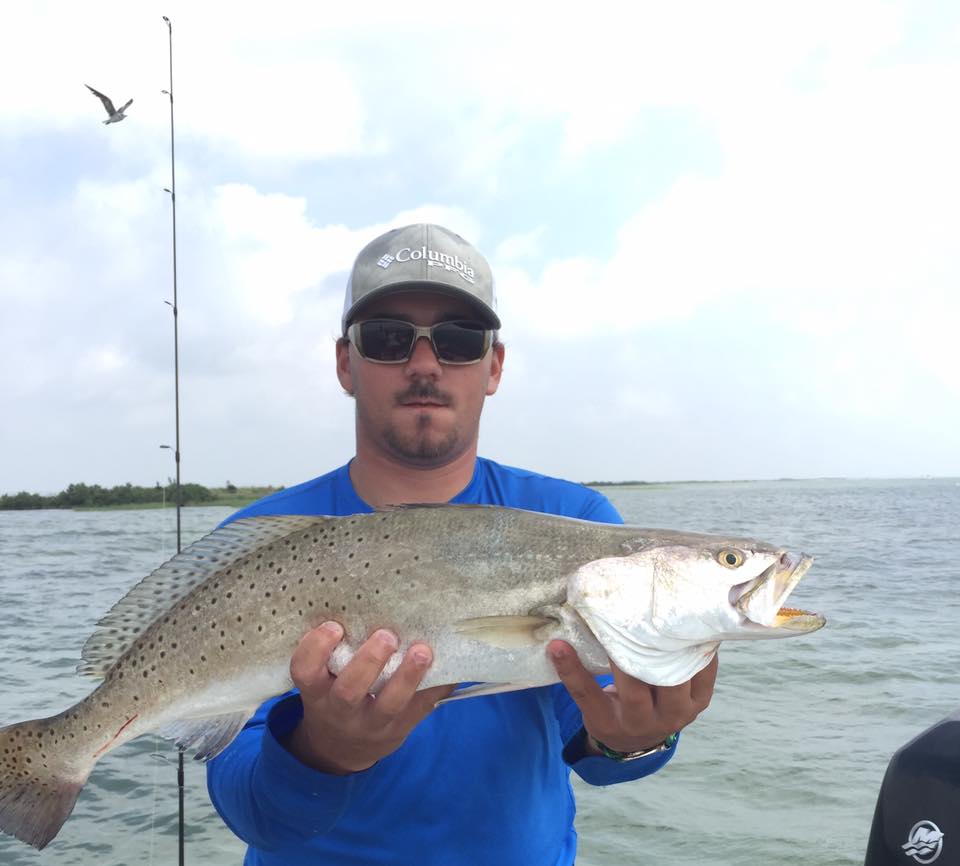
By Ralph Winingham
Special to the Express-News
ROCKPORT -- Capt. Ron Coulston doesn't mind being called a "croaker soaker."
Other guides and anglers may look down their noses at the use of the baitfish, so effective that several years ago there was a Texas Senate bill to ban them.
RALPH WININGHAM/SPECIAL TO THE EXPRESS-NEWS
Redfish, like this keeper being netted by Rockport guide Ron Coulston, find it nearly impossible to not latch on to live croaker fished in the right place at the right time along the Texas Gulf Coast.
"I used artificials only for a long time myself, but there is no argument that croakers work -- particularly on big trout and redfish," Coulston said. "Catching fish is what we are out here to do, so why shouldn't we use croakers?"
Coulston, a retired civil service employee who has about 30 years of fishing experience in this area, is among the many anglers who take advantage of "croaker season." It runs from the middle of May to about the end of August.
Atlantic croaker, also known as golden croaker, are closely related to speckled trout and redfish and are one of the most abundant fishes in North American coastal waters. Their effectiveness as a bait for big trout and reds is almost magical.
A 2- to 5-inch croaker hooked just above the anal opening with a 4/0 to 6/0 hook and cast into the right spot will result in a line-stripping strike with amazing regularity.
Some guides refuse to use croaker because they work so well, calling their use unethical and harmful to the population of trophy trout and reds. In addition, it cuts into the numbers of keeper croaker for fall anglers.
During the legislative session in 2003, Sen. Jon Lindsay of Houston filed a bill to ban the use of croaker less than 10 inches long as bait, which would have effectively prohibited fishing with the bait. Lindsay cited a crisis in both the trout and croaker populations.
Lindsay's bill received limited support but was actively opposed by the Texas Live Bait Dealers Association before the Legislature rejected it.
"People fishing with croaker have a slightly higher catch rate, but that is probably because a lot of guides are using croaker and they know how to catch more fish," said Ed Hegen, Region 2 director of the Coastal Fisheries Division of the Texas Parks & Wildlife Department.
Hegen said TP&W biologists aren't considering rule changes about the use of croakers as bait, although the department continues to monitor the trout and croaker populations. Surveys indicate the number of both juvenile and adult croakers is rising.
Despite the lingering controversy about the use of croaker as bait, plus their cost ranging from $6 to $15 per dozen, Coulston said he stays busy putting clients on big fish by using the noisy baits.
"You can catch fish with croakers when nothing else will work," he said. "The artificial-only guys have a hard time when croakers are in season."
The tag of "croaker soaker" is actually a misnomer, as most of the time the baits will attract a bite in the first few casts. If no trout or redfish latches onto a croaker within the first few minutes, there probably aren't any hungry fish in the area.
"The trick is to use a lively bait and twitch it every once in a while to make it croak," Coulston said.
Atlantic croaker "croak" by vibrating their swim bladders, a pocket full of air inside the fish that helps keep it afloat.
One downside of croaker as bait is their sensitivity to water temperature and conditions. Keeping them alive is a challenge.
Anglers need aerated live wells and commercial products that remove harmful chemicals from the live well water.
"Dead croakers are useless as bait," Coulston said.
Another tip Coulston offered during an early morning fishing adventure is the importance of patience.
"I tell my anglers to lower their rod tip or open the bail to let the fish run a little bit -- count to four -- so the trout or red will have a chance to swallow the bait before you set the hook," he said. "That's when the real fun begins."



